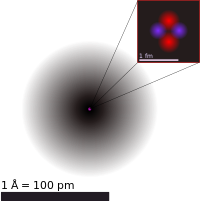
Photo from wikipedia
The hydrogen evolution effect of ZrS2 carrier loaded with transition metal single‐atom (SA) was explored by first‐principles method. ZrS2 was constructed with transition metal single‐atom and dual‐atom. The structure–activity relationship… Click to show full abstract
The hydrogen evolution effect of ZrS2 carrier loaded with transition metal single‐atom (SA) was explored by first‐principles method. ZrS2 was constructed with transition metal single‐atom and dual‐atom. The structure–activity relationship of supported single‐atom catalysts was described by electronic properties and hydrogen evolution kinetics. The results show that the ZrS2 carrier‐loaded atomic‐level catalysts are more likely to occur in acidic environments, where the Mo SA load has a higher hydrogen precipitation capacity than the Pt SA. In the case of dual‐atom adsorption, most of the hydrogen reduction processes are higher than that of single atom loading, which indicates that the outer orbital hybridization is more likely to lead to the interfacial charge recombination of the catalyst. Thereinto, Ni/Pt @ZrS2 has the lowest Gibbs free energy (0.08 eV), and the synergistic effect of transition metals induces the deviation of the center of the d‐band from the Fermi level and improves the dissociation ability of H ions. The design provides a new catalytic model for the HER and provides some ideas for understanding the two‐site catalysis.
Journal Title: Journal of Computational Chemistry
Year Published: 2022
Link to full text (if available)
Share on Social Media: Sign Up to like & get
recommendations!